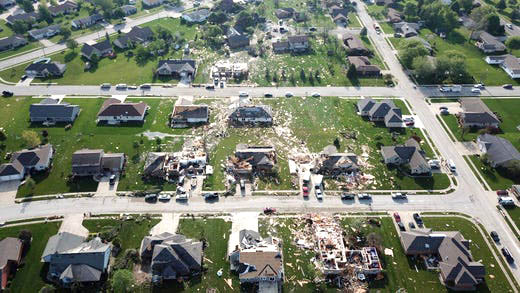RESILIENCE IN ARCHITECTURE
The American Institute of Architects (AIA) recently held a training in Columbus, Ohio, in which volunteer architects learned how to use their skills when responding to natural disaster sites. BDT’s personnel were proud to attend the Safety Assessment Program (SAP) training—and are even more equipped to quickly assess building safety in times of emergency.
Area SAP members recently responded after tornadoes recently touched down in Dayton and Celina. In this case, they looked for damage to structures that might have resulted from wind—but they also are trained in what to look for in situations where flooding, earthquake, or human-caused events occur.

Since 1972, AIA has advanced opportunities for architects to better serve communities when disasters occur. It has developed several initiatives within its Disaster Assistance Program, including the Resilience and Adaptation Initiative and SAP, among others.
These programs were recognized and bolstered by the 2018 Disaster Recovery Reform Act (DRRA), which paved the way for AIA to be even more proactive in its community response efforts. The Act requires the Federal Emergency Management Agency (FEMA), architects, and engineers to co-develop standardized best practices for building-safety assessments. These assessments, which are incorporated in SAP, focus on a building’s structural integrity and livability, post disaster. It also ensures a streamlined on-the-ground process in which local and state officials understand the role of architect volunteers, who are a vital resource to the recovery of communities after a disaster.
The AIA’s mission is to keep evolving all of its disaster-response programs, so as to meet the ever-changing effects of climate change, environmental degradation, population growth, and human migration. All of these forces alter long-term conditions—and demand design assessment and innovation. By supporting SAP trainings, the AIA empowers its members to be aware of emerging issues, have access to cutting-edge resources, and use their design skills to respond to the changing environment—both natural and built. This approach leads to the most sustainable, resilient, and adaptable communities possible.
HOW SAP WORKS
- SAP personnel approach an identified site after emergency first responders have cleared it for review.
- SAP volunteers are mobilized by the Authority Having Jurisdiction (AHJ), such as a municipality’s building department, county emergency management services, or even FEMA, depending on the scale of the disaster. In groups of two or three, the volunteers rapidly evaluate structures to determine if occupants are safe to return to each building.
- Critical structures, such as hospitals, fire stations, and schools receive specialized evaluations.
- Placards are placed on every evaluated structure, noting whether it’s safe, restricted, or unsafe to enter.
- If a building is labeled as restricted or unsafe, further evaluation determines if it can be restored. Perhaps utility companies must make repairs, or contractors must shore up the structure or remove mold.
- In extreme cases—such as when structures are in imminent danger of collapse—they are barricaded in such a way that unharmed, adjacent buildings might be inaccessible. These buildings are demolished.
- The AHJ works with the SAP reports and determines the next steps for the building owner.
PERSONAL SAFETY FIRST!
Sometimes it’s not possible to receive advance warning of a disaster, especially an earthquake. However, storms are often predicted. Please pay close attention to wind speeds and storm progress; if you’re near the coast or an inland waterway, take note of surge and flooding predictions. Below, we’ve listed a few basics to keep in mind:
Look Up!
- Parapets—walls that extend past the edge of a roof, balcony, terrace, or walkway—are especially susceptible to damage in earthquakes and windstorms, so be mindful of where you walk and shelter!
Look Down!
- “Scouring” under pavement and sidewalks washes loose sand from under the paved surface, which can undermine the slab.
- Earth movement from heavy rains can cause mines to collapse, taking roadways and buildings with them. If you live or work near coal, clay, or rock mines, find out how far they extend, and avoid roads that travel over them during intense storms.
Windstorms/Hurricanes/Floods
- Storm surge can have the same effects as earthquakes on buildings—knocking them off foundations and causing masonry walls to crack. Know when to move to higher ground.
- Place hurricane straps at trusses and structural wood paneling at gables, to prevent rain from entering if insulation is blown off.
- Tape roof sheathing joints to prevent water infiltration.
- Pay attention to wall-to-roof connections and sheathing to prevent water infiltration.
- Evaluate utilities, such as chimney flues, gas lines, and electric service. Typically services are shut down in disaster areas, but that may not always be the case. Turn off utilities until you’re sure danger has passed.
LINKS
AIA Disaster Assistance Program
AIA Disaster Assistance Program Updates
Emergency Response Guidebook
AIA Resilience and Adaptation Initiative